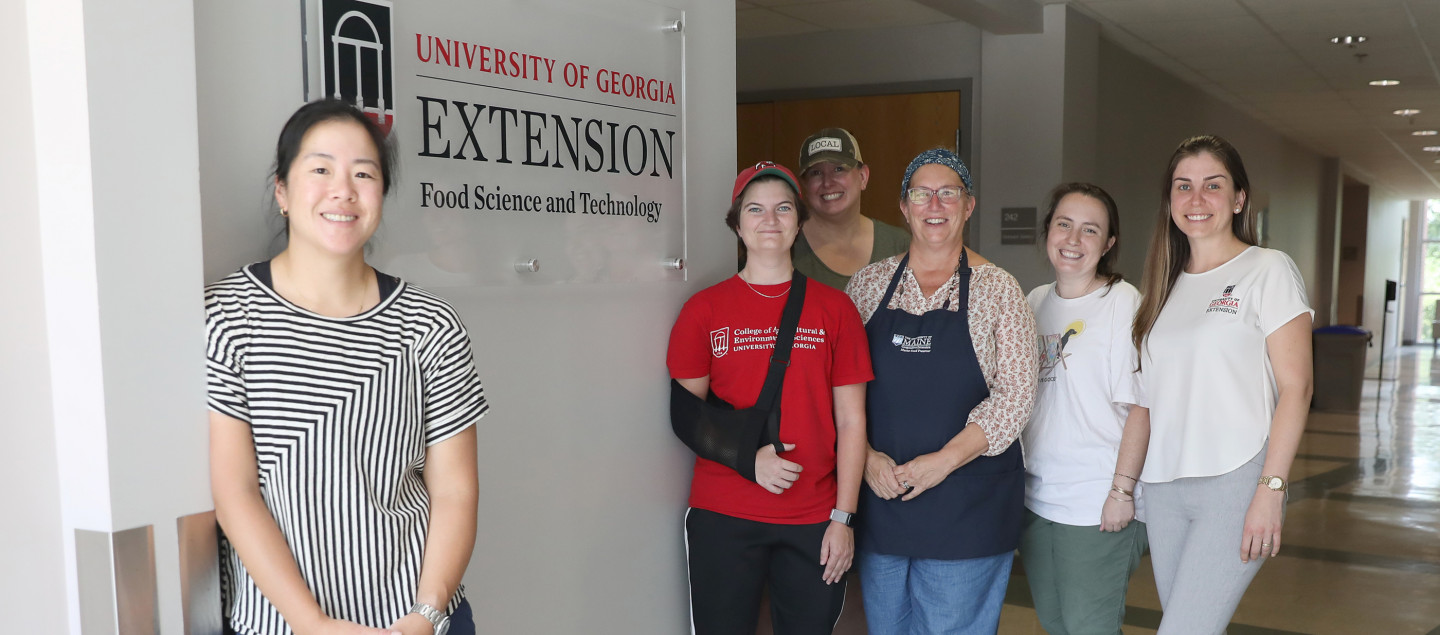Search for safe seafood broth recipe in the works

Safe recipes for canning chicken and other meat stocks are plentiful, but when it comes to seafood, the options are limited.
Currently there are no research-based, validated recipes for safely canning seafood broth at home, only recipes developed for taste and flavor.
A team of University of Georgia scientists, in collaboration with colleagues from the University of Maryland and University of Maine, are conducting an exploratory study they hope will lead to validated seafood broth recipes for home canners.
“Over half the states in the U.S. and territories have coastal waters, and fish and other seafood are nutritious foods,” said co-principal investigator Carla Schwan, an assistant professor in the College of Family and Consumer Sciences and director of the National Center for Home Food Preservation. “Proximity to coastal waters presents an opportunity to leverage seafood as an alternative or complementary food source, contributing to food supply security.”
Unsafe canning practices can lead to the growth of Clostridium botulinum, a microorganism that causes botulism, a severe foodborne illness characterized by muscle paralysis and potentially life-threatening complications if untreated.
C. botulinum thrives in low-oxygen, low-acid (pH>4.6) and ambient temperature environments, making improperly processed home-canned foods a common source of outbreaks, Schwan said.
“There are personal blogs and videos of unsafe and un-validated recipes for consumers, so it’s important to identify a validated recipe that is safe,” said principal investigator Shauna C. Henley of the University of Maryland Extension department of nutrition and food science.
Funded by the National Extension Association of Family and Consumer Sciences (NEAFCS), researchers on the project are targeting food waste such as fish heads, fins, backbones and shells, as well as onion and carrot peels and celery leaves.
“We were fortunate to have our colleague at the University of Rhode Island Cooperative Extension get us in contact with a large food manufacturer who was willing to share a recipe,” Henley said.
Researchers will soon analyze the data and publish their research, then potentially market the new consumer recipe, in addition to seeking funding for expanding recipes using seafood.
“Our recipe doesn’t require adding salt to it, so it would be appealing for an audience that may want to reduce sodium intake or who can’t have it at all,” Schwan said. “Traditional canned seafood broth you find at the grocery store has a high amount of sodium, which provides limited options for people who avoid or reduce sodium intake.”
Co-principal investigators on the project include Rohan Tikekar and Chengchu Liu from the University of Maryland and Kathy Savoie from the University of Maine Cooperative Extension.
Additional team members from the University of Georgia are Kaitlyn Casulli and Anna Grace Peebles with the College of Agricultural and Environmental Sciences, Kris Ingmundson from FACS, Scott Whiteside from Clemson University and Rachael Lou, an undergraduate student at the University of Maryland.
“We hope to make this recipe available for consumers through the NCHFP," said Casulli, assistant professor in the CAES Department of Food Science and Technology.
In this category: Nutrition
-
Best by vs. sell by: UGA food safety expert explains expiration dates
UGA Extension food safety specialist said most dates indicate peak quality rather than safety

-
Search for safe seafood broth recipe in the works
Researchers see opportunity to leverage seafood as an alternative or complementary food source

-
Interested in the vegetarian lifestyle? Here are a few tips
Faculty member Emma Laing offers advice on how to make the transition smoother
